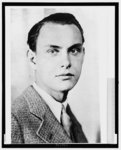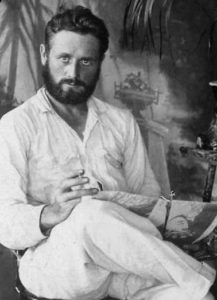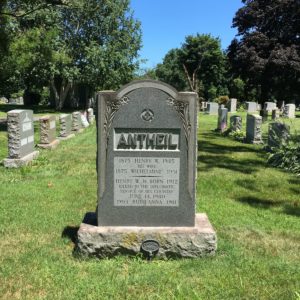One more for Halloween, from Jazz Age singer Lee Morse and the Blue Grass Boys:
Category: Jazz Age Adventurers
Mercy, the Mummy Mumbled: the 1918 African American Silent Film
With Halloween approaching, here’s a shoutout to an early mummy movie. Mercy, the Mummy Mumbled, is an all-black silent film from 1918. Several silent movies featured mummies as plot devices; The Egyptian Mummy, for example, was released in 1914 but Mercy is likely the only one made by African-American filmmakers for African-American audiences.
The plots of the two films are very similar: a mad scientist is willing to pay big bucks for a mummy to experiment on; a young man needs money to marry his girlfriend; a fake mummy is created. Mercy adds two Egyptian secret agents tracking down their country’s stolen artifacts to the story, all within an 11 minute run time.
Mercy, the Mummy Mumbled was released by the short-lived Ebony Film Corporation of Chicago and is included in Pioneers of African-American Cinema box set (but Mercy is only on the Blu-ray collection, not on the DVD collection) by Kino Lorber. The five discs include movies from as early as 1915 and as late as 1946. See the New York Times review for more details: Black Filmmaking Aborning. Much of the film can also be viewed on YouTube, and stills from Mercy can be seen at the DAARAC site. The Egyptian Mummy, released by the much larger Vitagraph company, can be streamed on Amazon Prime.
Archaeological Finds in WWI Trenches
Discovery in the Western Front Trenches has accounts from World War I soldiers of archaeological finds during wartime. Only a few stories are on the site so far. For an example of an archaeological excavation of an actual World War I trench system, see the Hill 80 Project.
The Kaleva Incident and the Death of Henry Antheil, Jr.
The name Henry Antheil, Jr, is on a tombstone in Riverview Cemetery, but he is not buried there. Henry, the younger brother of avant-garde composer George Antheil, was a Trenton, New Jersey native who joined the U.S. Foreign service as a cipher clerk and was posted in Helsinki, Finland, at the beginning of World War II. Henry Antheil, Jr., could be considered an early American casualty of both World War II and the Cold War.

As the Nazis advanced on Paris, the Soviet Union moved towards taking over the Baltic country of Estonia. On June 14, 1940, the 27 year old Antheil was sent to pick up several diplomatic pouches from the American legation in Estonia’s capital. He then boarded a Finnish commercial airplane, the Kaleva, to return to Finland. Less than ten minutes after the Kaleva took off from Estonia, two Soviet bombers intercepted it and shot it out of the sky. Almost immediately, a Soviet submarine arrived at the crash location and seized the diplomatic pouches. There were no survivors. The plane has never been recovered.
Fewkes and Field Workers Fight Florida Mosquitoes
From the National Anthropological Archives at the Smithsonian: Jazz Age archaeologist Jesse Walter Fewkes and co-workers showing off their anti-mosquito gear while working at the Weeden Island archaeological site in Florida, 1923.
Who Really Discovered the First Paleoindian Sites in Vermont?
In 1927, the Folsom site in New Mexico, which contained the distinctive fluted stone points of the same name directly associated with an extinct species of bison, was identified by archaeologists as the first Paleoindian site. In conjunction with the similar, but earlier, Clovis fluted points found at Blackwater Draw a few years later, these two sites provided clear evidence that humans had been present in the United States since the end of the Pleistocene.
As these discoveries became publicized and archaeologists looked for more examples of early sites, it soon became apparent that fluted points had been found in many states by amateur antiquarians, often as surface finds. Without good contextual data, however, no one had realized how old these points actually were.
In 1929, Vermont collector Benjamin Fisher read an article about the Folsom site in the New York Herald Tribune. He immediately wrote a letter to the scientist mentioned in the paper, Barnum Brown, at the American Museum of Natural History:
“Women who have really done things:” The Jazz Age Founders of The Society of Woman Geographers
You may known Marguerite Harrison from the silent-film era documentary Grass: A Nation’s Battle for Life, which she made with the two men who later went on to make King Kong. In 1925, the same year Grass was released, she and three other women formed The Society of Woman Geographers. The story of The Intrepid ’20s Women Who Formed an All-Female Global Exploration Society, by April White, is at Atlas Obscura.
Frans Ferdinand Blom: Danish Dixie Bohemian Archaeologist

“My first encounter with a cave filled with human skulls and bones occurred in 1928 at Huxjal.” Frans Ferdinand Blom knew how to start an article. His bio is now up at Jazz Age Adventurers.
Annie Alexander’s Contribution to Passenger Pigeon Research
An eyewitness account of trapping passenger pigeons in New Jersey in the early 1800s is one of only two publications by the woman who founded one of the premier paleontological museums in America.
In 1927, a short communication was published in the journal The Condor that quoted a letter from John Thomas Waterhouse to his parents back in England. Waterhouse described how the New Jerseyans hunted passenger pigeons using nets and guns.
Birdie Parker, a Woman of the Mother Road
Trowelblazing archaeologist/ethnologist Birdie Parker, a.k.a. Bertha Parker Cody, is also a Woman of the Mother Road.
